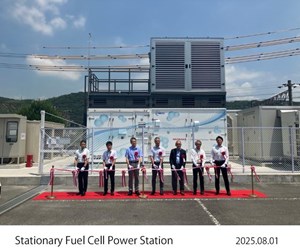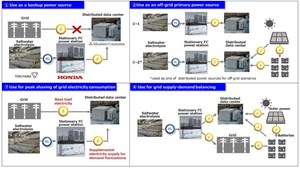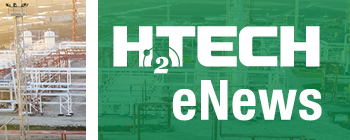News
Honda begins joint demonstration of stationary fuel cell power station designed to utilize byproduct H2 and repurposed automotive fuel cells
Honda Motor Co., Ltd. (Honda) has started a demonstration project jointly with Tokuyama Corporation (Tokuyama) and Mitsubishi Corporation (MC), to operate a data center using byproduct hydrogen and a stationary fuel cell (FC) power station designed to reuse FC systems from fuel cell electric vehicles (FCEVs). The companies today held an opening ceremony at the demonstration site located in Shunan City, Yamaguchi Prefecture, Japan.
The three companies have been discussing and preparing for the launch of the demonstration project since June 2023, when this project was proposed to and adopted by the New Energy and Industrial Technology Development Organization (NEDO) as one of the projects for the “Development of Technologies for Realizing a Hydrogen Society / Development of Technologies for Regional Hydrogen Utilization.”
In this demonstration project, a stationary FC power station that Honda has developed based on the assumption of reusing fuel cells recovered from FCEVs utilizes by-product hydrogen produced by Tokuyama’s salt water electrolysis business to generate electricity and supply the electricity to a distributed data center operated by MC, at the demonstration site located in Shunan City, Yamaguchi Prefecture, Japan.
Through this demonstration project, the three companies will explore the potential of reusing automotive FC systems for stationary FC power station applications and verify the possibility of contributing to 1) a reduction in the economic burden on customers who will install and operate stationary FC power stations and 2) the decarbonization of electric power, through effective use of FC systems, which are expected to see broader adoption in the future.
A further increase in power demand for data centers is expected in the long run due to the advancement of technologies that require large-volume data processing, such as generative AI and automated driving. In the face of this market environment, by utilizing 1) by-product hydrogen, which can be produced/supplied stably with low carbon emissions, and 2) FCs designed to be reused, to supply electricity to distributed data centers, the three companies will strive to contribute to the “green transformation” (GX) of data centers and the digital transformation (DX) of municipalities and local businesses.
In this demonstration, electricity from multiple sources, such as 1) a stationary FC power station that utilizes by-product hydrogen, 2) the power grid, 3) stationary batteries (BESS*¹), and 4) renewable energy sources will be combined to verify more efficient and optimal power configuration for different patterns of operation.
The following specific patterns of stationary FC power station utilization, based on various possible scenarios, will be demonstrated by switching among these operation patterns via an Energy Management System (EMS):
1) Use as a backup power source
2) Use as an off-grid primary power source
3) Use for peak shaving of grid electricity consumption
4) Use for grid supply-demand balancing, including supplying electricity back to the grid.
In addition to verifying the practicality and business viability of stationary FC power station operation, a wide range of potential applications will be explored through this demonstration project.



